The Steam Deck lobbed an unexpected grenade into the PC gaming world, distilling the handheld PC gaming experience into a simple, approachable, and affordable device. Gaming laptops are versatile but expensive and lack the ultra-portable handheld convenience of Steam’s device. That may sway you towards Valve’s handheld, but the Deck’s shortcomings shouldn’t be overlooked.
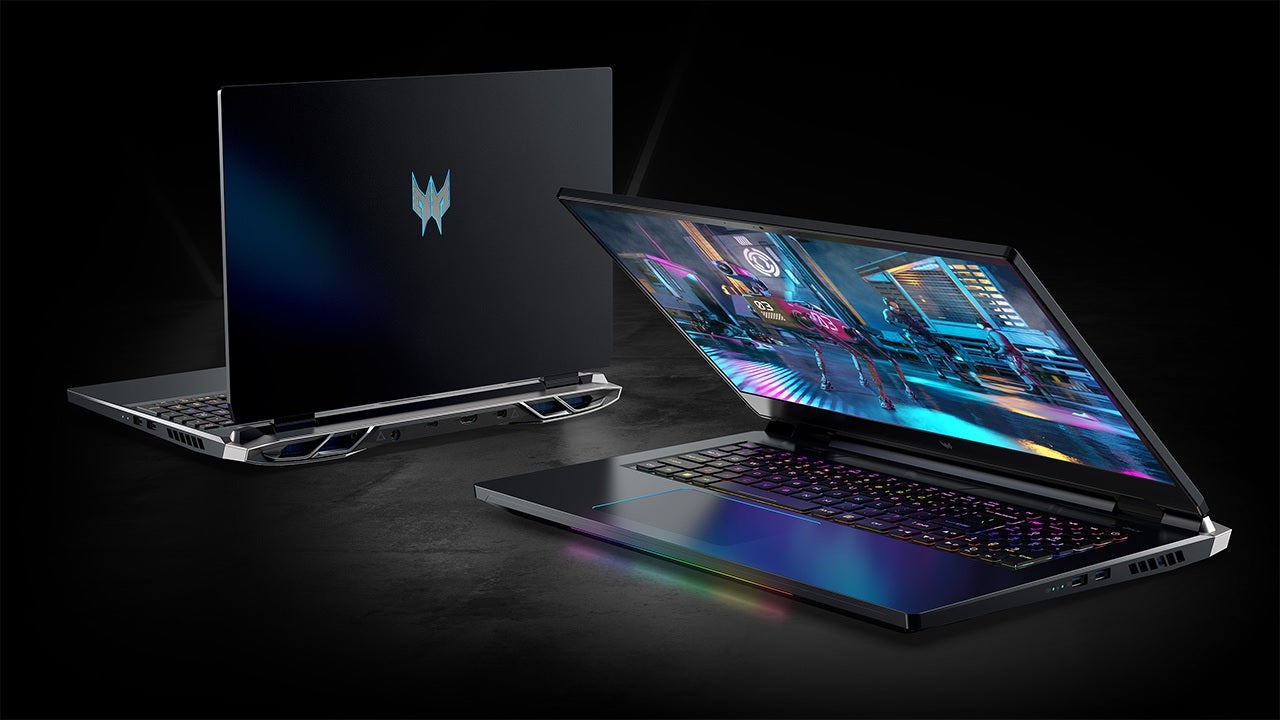
Gaming laptops are available in numerous configurations and sizes that range from bottom-barrel budget devices with AMD or Intel integrated graphics to high-end models with powerful GPUs such as the NVIDIA GeForce RTX 30/40 series and AMD’s Radeon RX 6000M line. Modern gaming laptops also ship with Intel Core and AMD Ryzen processors that, in most cases, have at least eight cores. Maximum power draw can be extremely high, with the most powerful gaming laptops exceeding 250 watts at load.
The Steam Deck always ships with the same, slightly customized AMD APU. It includes a four-core, eight-thread CPU based on AMD’s Zen 2 architecture, which also appears in numerous Ryzen 4000 and Ryzen 5000 mobile processors (and some Ryzen 7000 models, too). The integrated Radeon GPU has eight RDNA 2 Compute Units, equivalent to those found in many Ryzen laptop APUs. The Steam Deck’s APU is restricted to a mere 15 watts of power—at stock settings, at least.
Performance varies widely, of course, but even the least capable gaming laptops are roughly as powerful as the Steam Deck. IGN's Steam Deck review tested its capabilities with the 3DMark Time Spy gaming benchmark, which hit a score of 1,715. That’s slightly behind a laptop with Intel Iris Xe graphics, which scored 1,837, and way behind a budget gaming laptop with Nvidia GTX 1650 graphics, which scored 3,764.
In short, the Steam Deck’s performance is miles off that of a budget gaming laptop, and it frequently struggles to play demanding games at acceptable frame rates. The Deck can handle older or better optimized titles, like Borderlands 3 and Hitman 3, but can choke on notorious system-killers, like Metro Exodus or Horizon: Zero Dawn.
It’s possible to claw back some performance if you switch to a lower display resolution than the Steam Deck’s native 1,200 x 800, or with a frame reconstruction technique such as AMD’s FideltyFX Super Resolution (FSR). This will only get you so far, however, as the quad-core processor is a major bottleneck that can tank performance in modern games. Most new games that target a cross-platform release (on PC, Xbox Series S|X, and PlayStation 5) will perform much worse on the Steam Deck than on a budget gaming laptop.
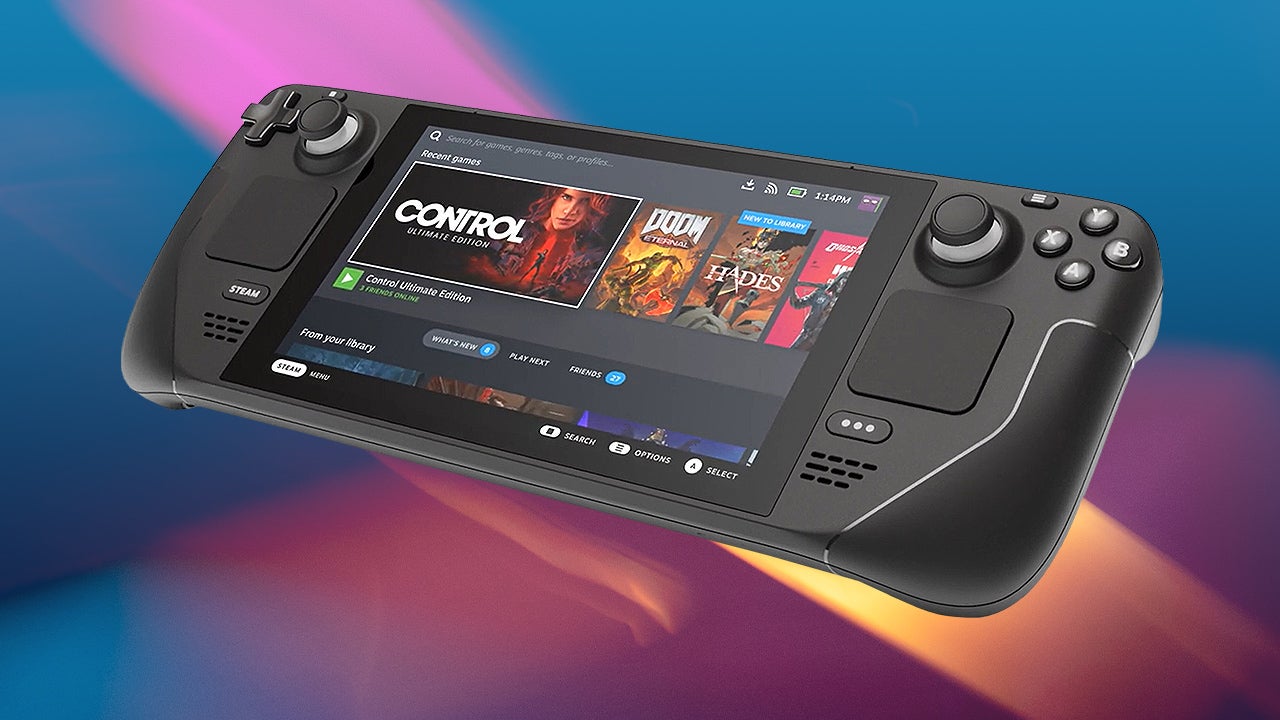
Gaming laptops run the same version of Windows as any other PC and maintain compatibility with a vast library of games available on Steam, the Epic Games Store, GOG, and Ubisoft Connect, among others. Odds are you already have a library of games that span multiple storefronts as well as older titles you acquired through a DRM-free digital platform. A gaming laptop will handle this entire library without issue.
The Steam Deck is (mostly) restricted to a selection of compatible games found on Steam. The operating system installed on the Deck is a Linux variant and can run games that have a Linux version natively. Many don’t, however, and instead run through a compatibility layer called Proton. Valve has a list of “Deck Verified” games available on its website. You also sort games by compatibility in Steam, which makes it easy to find compatible games on the store and in your existing Steam library.
ProtonDB, a website which tracks Deck Verified games and reports player experiences with games that are not verified, currently lists 3,183 Steam Deck verified games. An additional 5,500 games are listed as “playable” based on player reports though, in my experience, games that are playable can still suffer bugs. That’s a lot of games, but only 10 percent of games listed on Steam are Deck Verified, and only 40 percent are considered playable. A mere 20 percent of the top 100 games on Steam (measured by concurrent players) are Deck Verified.
The Deck can also play a wide variety of older console games, from the original NES up to (some) titles from the Xbox/Wii U/PlayStation 2 era, through emulators—but the same is true of any gaming laptop.
How this changes your buying decision depends on the games you play. The Deck will prove alluring if your favorite games are supported, and the reverse is true if all your favorite titles are incompatible. Thankfully, ProtonDB has a useful feature that can sort through your Library and break down compatibility game-by-game.
You might also wonder: can’t I just install Windows on the Steam Deck? That’s an option, but installing can prove a bit tricky and the experience isn’t smooth. Going this route removes some of the interface conveniences that SteamOS provides. Driver support is spotty, as well, and games that are Deck Verified may run better under SteamOS than under Windows.
The Deck supports thousands of excellent games, but a gaming laptop can handle tens of thousands of back catalog titles that aren’t Deck Verified. A gaming laptop is a more versatile, reliable gaming device. You can see our list of the best Steam Deck games for more info.
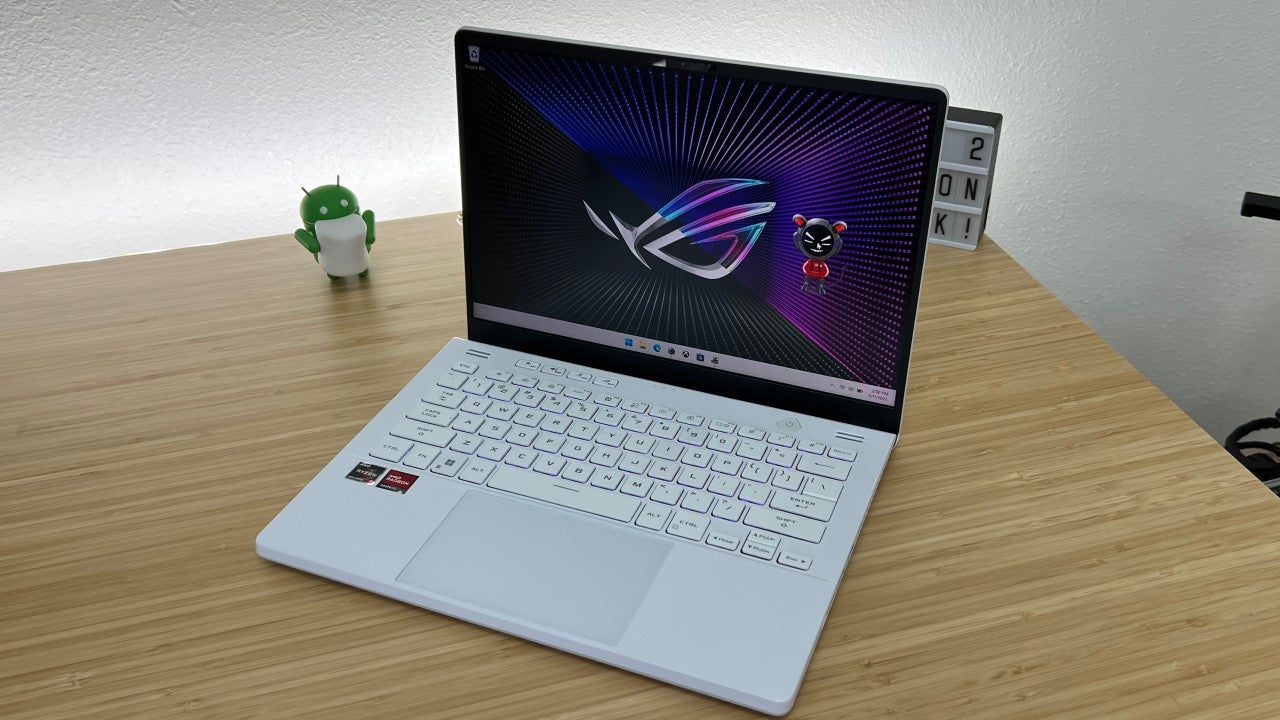
Gaming laptops have come a long way in portability, and many models now feature slim, lightweight designs that measure under an inch thick and weigh less than five pounds. Still, even the most portable gaming laptops are larger and heavier than the Steam Deck. The Alienware x14, an excellent compact gaming laptop, weighs a bit over four pounds, while the Steam Deck weighs roughly 1.5 pounds.
The Steam Deck also benefits from its handheld design, which makes it comfortable to hold and play on-the-go. Its form factor is similar to that of the Nintendo Switch, making it easy to enjoy games on public transportation, in waiting rooms, or while reclining on a couch or in bed. You might be able to break out a gaming laptop in similar situations, but it’s less comfortable and often requires a separate wireless PC gaming controller, further increasing its weight and bulk.
See Steam Deck Prices and How to Order Here.
This is a clear win for the Steam Deck. Gaming laptops can’t compete with the Deck’s comfortable, lightweight design.

The most powerful gaming laptops usually have the shortest battery life, ranging from one to twelve hours of gaming on a single charge. Some laptops, especially those with integrated graphics or entry-level dedicated GPUs, offer far superior battery life, but it comes at the cost of reduced gaming performance (though performance will still exceed the Steam Deck).
The Steam Deck offers battery life of one to eight hours, depending on the game and the device's power settings. Valve has optimized the Steam Deck's power management options to help users find a balance between performance and battery life, which helps improve battery life in real-world gameplay.
Battery size is an important factor, and one that keeps the Steam Deck’s power-sipping APU from vastly outperforming a gaming laptop. The small, compact Deck has a small 40 watt-hour battery. It’s tiny compared to gaming laptops, which tend to have a battery size between 50 and 99 watt-hours.
In truth, both gaming laptops and the Steam Deck could benefit from improved battery life, Neither device can handle more than a few hours of gameplay in most situations, though less demanding 2D titles (like Stardew Valley or FTL) can lengthen your experience.
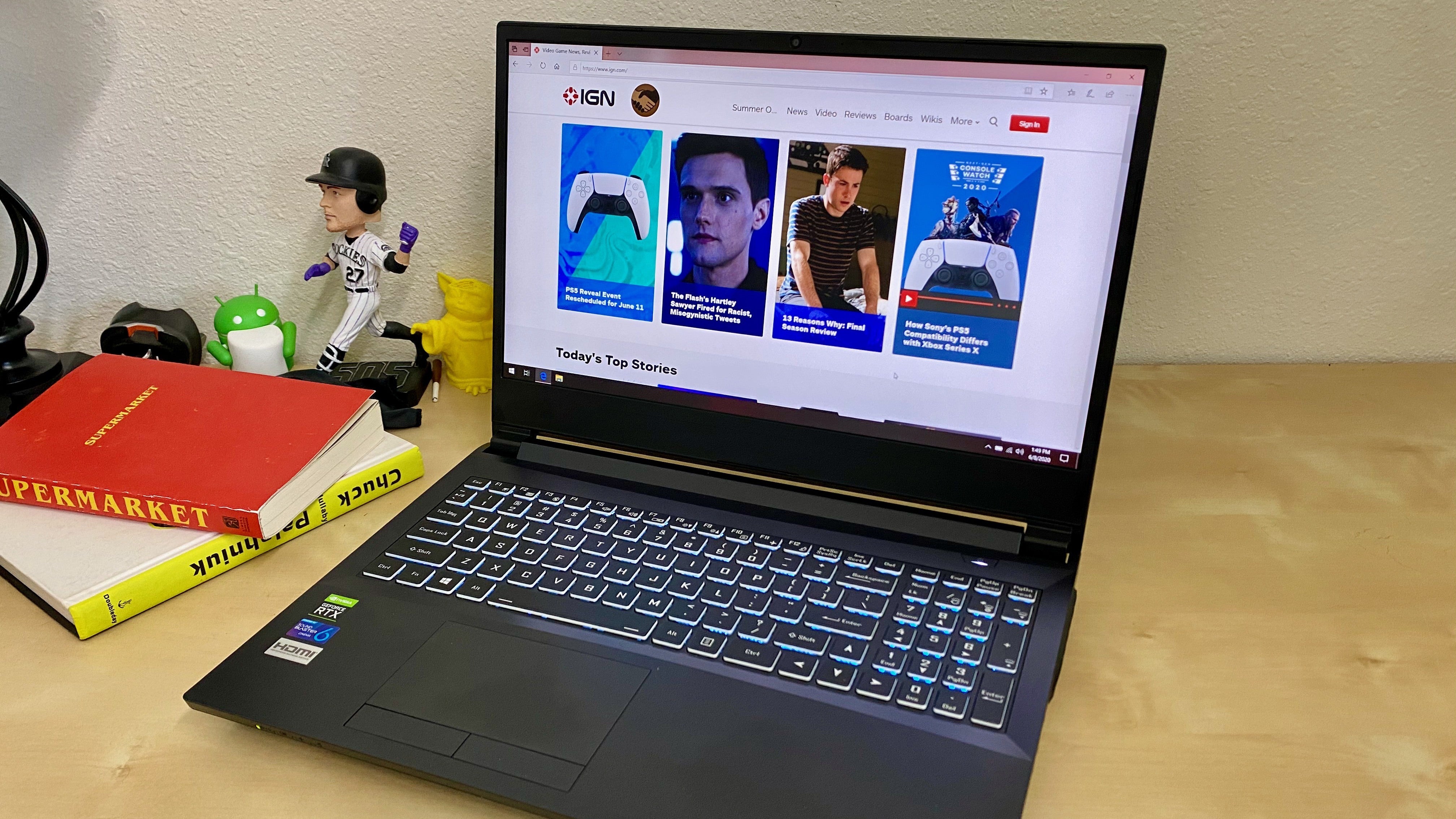
Gaming laptops offer all the features found on any Windows laptop. They come equipped with physical keyboards, large touchpads, and multiple ports for connecting peripherals and external displays. Most also have a built-in webcam and microphone for video calls and loud, powerful speakers (compared to the Deck, at least). All of this makes a gaming laptop more versatile than the Steam Deck. You can use a gaming laptop for work all day, then switch to using it for games at night.
The Steam Deck is a more focused device. It has an integrated gamepad with thumbsticks, face buttons, a D-Pad, and touchpads for precise control in games that require a mouse. Connectivity is provided by a single USB-C port, which charges the Deck and can be used to connect an external display. The Deck also has a MicroSD card reader, which is useful for loading games and other content. A microphone is included, but a webcam is absent.
Obviously, a gaming laptop and the Steam Deck serve different needs, and this fact is important to keep in mind. You might think it’s possible to use the Deck like a Windows desktop if you dock a keyboard and mouse, or that it’s possible to use a gaming laptop like the Steam Deck if you connect a wireless gamepad. This is true, but I expect most gamers will find these workarounds frustrating. They’re fundamentally different devices built for different situations.
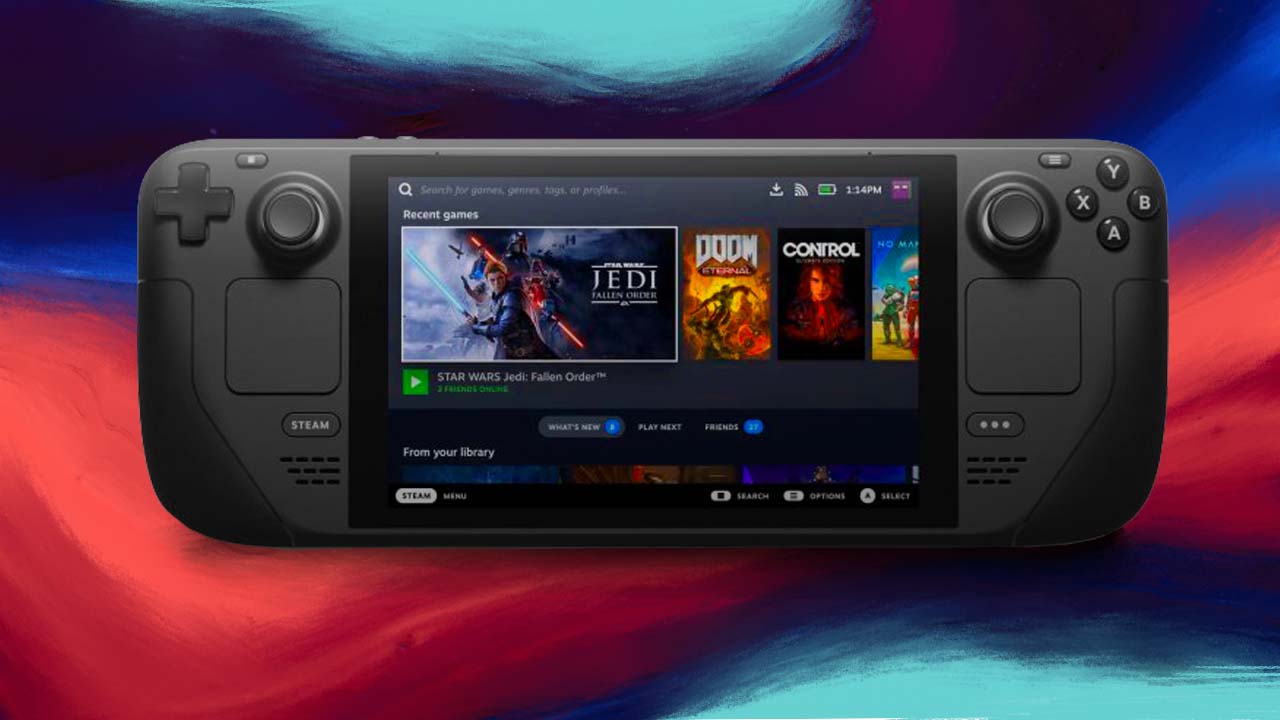
The Steam Deck has a tempting base MSRP of $399. That leaves you with a mere 64GB of internal storage, however, which isn’t enough to install many modern games. I recommend the 256GB model, which retails at $529. The top-tier 512GB model, priced at $649, is a good upgrade if you plan to play games that test the Deck’s limits (like Horizon: Zero Dawn or the latest Call of Duty).
Gaming laptops cover a much wider range of pricing. Entry-level models like the HP Victus and Acer Nitro can be found on sale for around $600, while high-end models like the Razer Blade 18 and MSI Titan can exceed $5,000.
That would seem to give the Deck an edge, but remember: gaming laptops are more versatile and powerful. At the time this article was written, it was possible to pick up an HP Victus gaming laptop with an Intel Core i5-12450H, Nvidia GTX 1650 graphics, 8GB of RAM, and 512GB of SSD storage for $550. This configuration will easily thump the Deck in benchmarks.
A gaming laptop can also accomplish tasks the Deck can’t handle. A laptop like the HP Victus is a workable entry-level choice for content creation, game development, and basic home office productivity. The same can't be said of the Deck, which hurts its value.
Making the choice between a Steam Deck and a gaming laptop isn’t easy, but this comparison has a clear victor. Gaming laptops win the day. Gaming laptops are more versatile, more powerful, have more included features, and support a wider library of games. The game is only increasing as time goes on, too, as gaming laptops regularly receive new hardware updates. Valve has plans to release a successor to the Steam Deck, but when that will happen is anyone’s guess.
Does that mean the Deck should be thrown in a bin? Of course not. The Deck is less capable but remains an alluring device that provides a handheld experience at an attractive price. Comparing the Steam Deck to a gaming laptop is a case of comparing apples to oranges. Or, to really torture the metaphor, it’s like comparing an apple against a whole bag of oranges.
A bag of oranges is great, but a thousand pounds of citrus won’t satisfy your appetite if all you want is an apple.
Matthew S. Smith is a hardware and tech freelance writer with more than 15 years of industry experience.
Continue reading...
We compare the Steam Deck and gaming laptops with the following in mind:
- Game Performance
- Compatibility
- Portability and Form Factor
- Battery Life
- Extra features
- Value
- Verdict
Steam Deck vs. Gaming Laptop: Performance

Gaming laptops are available in numerous configurations and sizes that range from bottom-barrel budget devices with AMD or Intel integrated graphics to high-end models with powerful GPUs such as the NVIDIA GeForce RTX 30/40 series and AMD’s Radeon RX 6000M line. Modern gaming laptops also ship with Intel Core and AMD Ryzen processors that, in most cases, have at least eight cores. Maximum power draw can be extremely high, with the most powerful gaming laptops exceeding 250 watts at load.
The Steam Deck always ships with the same, slightly customized AMD APU. It includes a four-core, eight-thread CPU based on AMD’s Zen 2 architecture, which also appears in numerous Ryzen 4000 and Ryzen 5000 mobile processors (and some Ryzen 7000 models, too). The integrated Radeon GPU has eight RDNA 2 Compute Units, equivalent to those found in many Ryzen laptop APUs. The Steam Deck’s APU is restricted to a mere 15 watts of power—at stock settings, at least.
Performance varies widely, of course, but even the least capable gaming laptops are roughly as powerful as the Steam Deck. IGN's Steam Deck review tested its capabilities with the 3DMark Time Spy gaming benchmark, which hit a score of 1,715. That’s slightly behind a laptop with Intel Iris Xe graphics, which scored 1,837, and way behind a budget gaming laptop with Nvidia GTX 1650 graphics, which scored 3,764.
In short, the Steam Deck’s performance is miles off that of a budget gaming laptop, and it frequently struggles to play demanding games at acceptable frame rates. The Deck can handle older or better optimized titles, like Borderlands 3 and Hitman 3, but can choke on notorious system-killers, like Metro Exodus or Horizon: Zero Dawn.
It’s possible to claw back some performance if you switch to a lower display resolution than the Steam Deck’s native 1,200 x 800, or with a frame reconstruction technique such as AMD’s FideltyFX Super Resolution (FSR). This will only get you so far, however, as the quad-core processor is a major bottleneck that can tank performance in modern games. Most new games that target a cross-platform release (on PC, Xbox Series S|X, and PlayStation 5) will perform much worse on the Steam Deck than on a budget gaming laptop.
Performance Winner: Gaming Laptop
Steam Deck vs. Gaming Laptop: Compatibility

Gaming laptops run the same version of Windows as any other PC and maintain compatibility with a vast library of games available on Steam, the Epic Games Store, GOG, and Ubisoft Connect, among others. Odds are you already have a library of games that span multiple storefronts as well as older titles you acquired through a DRM-free digital platform. A gaming laptop will handle this entire library without issue.
The Steam Deck is (mostly) restricted to a selection of compatible games found on Steam. The operating system installed on the Deck is a Linux variant and can run games that have a Linux version natively. Many don’t, however, and instead run through a compatibility layer called Proton. Valve has a list of “Deck Verified” games available on its website. You also sort games by compatibility in Steam, which makes it easy to find compatible games on the store and in your existing Steam library.
ProtonDB, a website which tracks Deck Verified games and reports player experiences with games that are not verified, currently lists 3,183 Steam Deck verified games. An additional 5,500 games are listed as “playable” based on player reports though, in my experience, games that are playable can still suffer bugs. That’s a lot of games, but only 10 percent of games listed on Steam are Deck Verified, and only 40 percent are considered playable. A mere 20 percent of the top 100 games on Steam (measured by concurrent players) are Deck Verified.
The Deck can also play a wide variety of older console games, from the original NES up to (some) titles from the Xbox/Wii U/PlayStation 2 era, through emulators—but the same is true of any gaming laptop.
How this changes your buying decision depends on the games you play. The Deck will prove alluring if your favorite games are supported, and the reverse is true if all your favorite titles are incompatible. Thankfully, ProtonDB has a useful feature that can sort through your Library and break down compatibility game-by-game.
You might also wonder: can’t I just install Windows on the Steam Deck? That’s an option, but installing can prove a bit tricky and the experience isn’t smooth. Going this route removes some of the interface conveniences that SteamOS provides. Driver support is spotty, as well, and games that are Deck Verified may run better under SteamOS than under Windows.
The Deck supports thousands of excellent games, but a gaming laptop can handle tens of thousands of back catalog titles that aren’t Deck Verified. A gaming laptop is a more versatile, reliable gaming device. You can see our list of the best Steam Deck games for more info.
Compatibility Winner: Gaming Laptop
Steam Deck vs. Gaming Laptop: Portability and Form Factor

Gaming laptops have come a long way in portability, and many models now feature slim, lightweight designs that measure under an inch thick and weigh less than five pounds. Still, even the most portable gaming laptops are larger and heavier than the Steam Deck. The Alienware x14, an excellent compact gaming laptop, weighs a bit over four pounds, while the Steam Deck weighs roughly 1.5 pounds.
The Steam Deck also benefits from its handheld design, which makes it comfortable to hold and play on-the-go. Its form factor is similar to that of the Nintendo Switch, making it easy to enjoy games on public transportation, in waiting rooms, or while reclining on a couch or in bed. You might be able to break out a gaming laptop in similar situations, but it’s less comfortable and often requires a separate wireless PC gaming controller, further increasing its weight and bulk.
See Steam Deck Prices and How to Order Here.
This is a clear win for the Steam Deck. Gaming laptops can’t compete with the Deck’s comfortable, lightweight design.
Portability and Form Factor Winner: Steam Deck
Steam Deck vs. Gaming laptop: Battery Life

The most powerful gaming laptops usually have the shortest battery life, ranging from one to twelve hours of gaming on a single charge. Some laptops, especially those with integrated graphics or entry-level dedicated GPUs, offer far superior battery life, but it comes at the cost of reduced gaming performance (though performance will still exceed the Steam Deck).
The Steam Deck offers battery life of one to eight hours, depending on the game and the device's power settings. Valve has optimized the Steam Deck's power management options to help users find a balance between performance and battery life, which helps improve battery life in real-world gameplay.
Battery size is an important factor, and one that keeps the Steam Deck’s power-sipping APU from vastly outperforming a gaming laptop. The small, compact Deck has a small 40 watt-hour battery. It’s tiny compared to gaming laptops, which tend to have a battery size between 50 and 99 watt-hours.
In truth, both gaming laptops and the Steam Deck could benefit from improved battery life, Neither device can handle more than a few hours of gameplay in most situations, though less demanding 2D titles (like Stardew Valley or FTL) can lengthen your experience.
Battery Life Winner: Tie
Steam Deck vs. Gaming Laptop: Extra Features

Gaming laptops offer all the features found on any Windows laptop. They come equipped with physical keyboards, large touchpads, and multiple ports for connecting peripherals and external displays. Most also have a built-in webcam and microphone for video calls and loud, powerful speakers (compared to the Deck, at least). All of this makes a gaming laptop more versatile than the Steam Deck. You can use a gaming laptop for work all day, then switch to using it for games at night.
The Steam Deck is a more focused device. It has an integrated gamepad with thumbsticks, face buttons, a D-Pad, and touchpads for precise control in games that require a mouse. Connectivity is provided by a single USB-C port, which charges the Deck and can be used to connect an external display. The Deck also has a MicroSD card reader, which is useful for loading games and other content. A microphone is included, but a webcam is absent.
Obviously, a gaming laptop and the Steam Deck serve different needs, and this fact is important to keep in mind. You might think it’s possible to use the Deck like a Windows desktop if you dock a keyboard and mouse, or that it’s possible to use a gaming laptop like the Steam Deck if you connect a wireless gamepad. This is true, but I expect most gamers will find these workarounds frustrating. They’re fundamentally different devices built for different situations.
Extra Features Winner: Tie
Steam Deck vs. Gaming Laptop: Value

The Steam Deck has a tempting base MSRP of $399. That leaves you with a mere 64GB of internal storage, however, which isn’t enough to install many modern games. I recommend the 256GB model, which retails at $529. The top-tier 512GB model, priced at $649, is a good upgrade if you plan to play games that test the Deck’s limits (like Horizon: Zero Dawn or the latest Call of Duty).
Gaming laptops cover a much wider range of pricing. Entry-level models like the HP Victus and Acer Nitro can be found on sale for around $600, while high-end models like the Razer Blade 18 and MSI Titan can exceed $5,000.
That would seem to give the Deck an edge, but remember: gaming laptops are more versatile and powerful. At the time this article was written, it was possible to pick up an HP Victus gaming laptop with an Intel Core i5-12450H, Nvidia GTX 1650 graphics, 8GB of RAM, and 512GB of SSD storage for $550. This configuration will easily thump the Deck in benchmarks.
A gaming laptop can also accomplish tasks the Deck can’t handle. A laptop like the HP Victus is a workable entry-level choice for content creation, game development, and basic home office productivity. The same can't be said of the Deck, which hurts its value.
Value Winner: Gaming Laptop
Verdict: Gaming laptops win, but the Steam Deck remains alluring
Making the choice between a Steam Deck and a gaming laptop isn’t easy, but this comparison has a clear victor. Gaming laptops win the day. Gaming laptops are more versatile, more powerful, have more included features, and support a wider library of games. The game is only increasing as time goes on, too, as gaming laptops regularly receive new hardware updates. Valve has plans to release a successor to the Steam Deck, but when that will happen is anyone’s guess.
Does that mean the Deck should be thrown in a bin? Of course not. The Deck is less capable but remains an alluring device that provides a handheld experience at an attractive price. Comparing the Steam Deck to a gaming laptop is a case of comparing apples to oranges. Or, to really torture the metaphor, it’s like comparing an apple against a whole bag of oranges.
A bag of oranges is great, but a thousand pounds of citrus won’t satisfy your appetite if all you want is an apple.
Matthew S. Smith is a hardware and tech freelance writer with more than 15 years of industry experience.
Continue reading...


